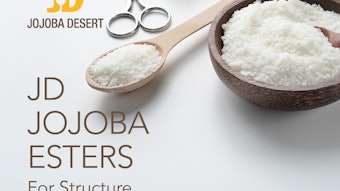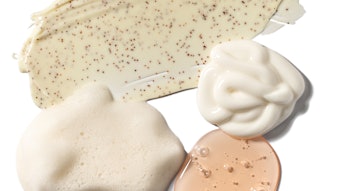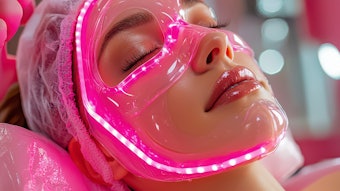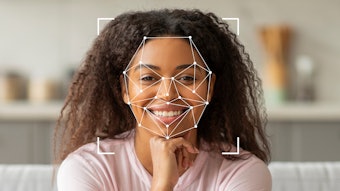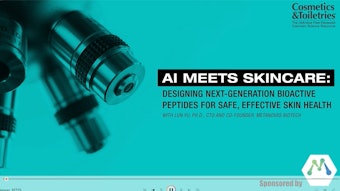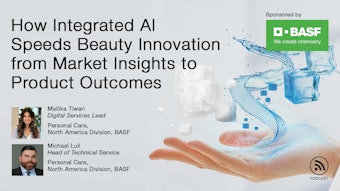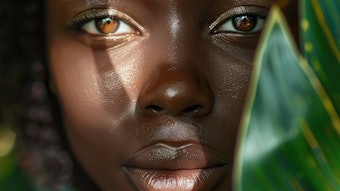
From smart packaging and exosome design to conversational AI and predictive diagnostics, digital tech and platforms are reshaping cosmetics R&D. Here, expert insights reveal how tech is driving adaptive, personalized, biologically aware beauty innovation.
This article is only available to registered users.
Log In to View the Full Article
From smart packaging and exosome design to conversational AI and predictive diagnostics, digital tech and platforms are reshaping cosmetics R&D. Here, expert insights reveal how tech is driving adaptive, personalized, biologically aware beauty innovation.
Digital technologies and platforms are fundamentally reshaping the beauty and personal care industry — not just through AI, but also data systems, connected devices, biotech interfaces, ingredient development platforms and user-centric digital ecosystems. Tools such as real-time diagnostics, conversational interfaces, predictive analytics and smart packaging are converging to enable more intelligent, responsive and personalized cosmetic experiences. These technologies are breaking down silos between R&D, marketing and consumer engagement, transforming how products are conceived, tested, delivered and evolved.
Within this context, AI is emerging as a particularly powerful enabler. According to Insight Ace Analytics,1 the global AI-in-beauty market was valued at $4.43 billion in 2024 and is projected to grow to $27.65 billion by 2034.
In this fast-evolving landscape, AI is used not only to optimize processes, but to build systems that integrate biology, behavior and feedback into real-time product evolution. These technologies help brands move from static formulations to adaptive solutions that continuously improve based on user data, clinical markers or environmental inputs. As highlighted by these expert interviews, digital R&D is no longer theoretical — it’s operational, scalable and redefining value across the cosmetic value chain.
Following are perspectives from leaders who are pioneering this shift — from molecular design and exosome design to scent personalization and smart product packaging. Together, they illustrate how digital tools are helping brands move beyond innovation for innovation’s sake and toward systems that are intelligent, measurable, meaningful and deeply aligned with individual biology and behavior.
Autonomous AI, Cross-context Reasoning and Adaptive Cosmetics
“Cosmetic R&D is shifting from serendipitous discovery to AI-driven biological design, especially in peptides, bioferments and microbiome actives,” writes Lun Yu, Ph.D., co-founder and CTO of Metanovas Biotech, Inc. “Deep learning models now screen, simulate and generate novel molecules with predicted efficacy, reducing trial-and-error.”
He explains that Metanovas uses large language models and multi-omics analysis to uncover mechanisms behind aging, inflammation and skin barrier dysfunction, then applies deep learning to design peptides and bioactives that precisely target those pathways. “This evolution is driven by consumer demand for science-backed claims, regulatory pressure for transparency, and brands’ need for faster, differentiated innovation.”
Looking ahead, Yu believes technologies like these will become more autonomous. “We’re moving toward agentic AI systems that don’t just predict, but reason across biological, chemical and clinical contexts to autonomously design, test and refine actives,” he observes. “There’s enormous potential in integrating real-world phenotype data, from skin sensors, in vitro models or longitudinal consumer trials, back into molecular optimization loops.”
He continues, “at Metanovas, we envision a future where AI designs precision ingredients not just for skin types, but for molecular phenotypes and lifestyle factors as well. That opens the door to truly adaptive actives: cosmetic ingredients that evolve with the user, informed by biology.”
To move in this direction, Yu points to the need for cross-domain foundation models that can simultaneously understand molecular structure, biological function and clinical context.
“Metanovas built a modular platform stack to enable this,” he adds, highlighting:
- MetaNLP, to mine scientific text for novel insights,
- MetaOmics, which analyzes multi-omics data for population-specific mechanisms,
- MetaKG, to connect pathways, ingredients and phenotypes in a biological knowledge graph and
- MetaPep, which uses deep generative models to design bioactive peptides from scratch.
“Together, these enable AI agents that can hypothesize new actives, justify their mechanisms and predict performance, all before entering the lab. This will empower faster, smarter and more transparent product innovation in cosmetics.”
 Image by Beauty Hero at Adobe Stock
Image by Beauty Hero at Adobe Stock
Conversational AI to Merge Product Discovery, Trial, Feedback and Repeat Purchase
Anastasia Georgievskaya, CEO and Co-founder of Haut.AI, sees the integration of conversational AI as a springboard to drive product development. “One of the promising directions is how conversational AI is turning into the connective tissue of the entire product lifecycle.”
She explains, “Many brands still struggle to gather meaningful first-party data. Often, they don’t even know how someone ended up buying in the first place. For instance, many people discover products from recommendations, or private social feeds — contexts that rarely show up in standard analytics. Conversational systems can start to fill this gap by becoming the place where those details surface organically.
“A smart assistant can track how someone uses a product, follow up to see whether it worked, and ask about any changes in their environment or habits,” she continues. “Over time, this creates a high-quality dataset that feeds directly into R&D and helps shape decisions about new formulations or how products are packaged and explained.”
According to Georgievskaya, as generative AI becomes more advanced, these systems will not just answer questions. “They can already adapt in real time, offering personalized advice, illustrating how an ingredient might affect someone’s skin and guiding people through decisions in a way that feels less like marketing and more like having a knowledgeable guide — capabilities already integrated into solutions like Haut.AI. For brands, it’s a way to collect insights that traditional research almost never uncovers.”
Per Georgievskaya, the bigger shift is that product discovery, trial, feedback and repeat purchase will no longer be separate steps. “They’ll connect into one continuous, intelligent loop,” she writes. “Brands will end up building a living system where every interaction makes both their products and their customer relationships stronger.”
Tech-formula Synergies for Seamless Consumer Experience
With a view toward tangible technologies, Alain Dijkstra, Founder and CEO of Nuon Medical Technologies, highlights innovations that enhance product delivery to skin. “Current trends in cosmetic product development focus on integrating delivery-enhancing technologies into packaging — moving beyond passive containers toward active or secondary applicators that directly improve ingredient efficacy,” he writes.
“What’s driving this is clear: Brands want to prove clinical-level outcomes without increasing formula complexity,” he adds. “Consumers now expect visible results and brands are seeking differentiation not only through ingredients, but also via how they’re delivered.”
According to Dijkstra, future directions in this space include active packaging. “We see the future evolving toward smart packaging systems — formats that combine phototherapy, microcurrent, PEMF (pulsed electromagnetic field) or ultrasonic functions with skin-compatible formulas. The next wave is about tech-formula synergy, where the packaging, for example, actively enhances bioavailability, reduces inflammation or stimulates collagen — all as part of a seamless user experience.”
To support these advancements, Dijkstra points to technologies including LED therapy (red, blue, NIR), microcurrent, EMS, PEMF and ultrasonic vibration. “[These are] already miniaturized for integration into tube heads, jar caps or droppers,” he explains. “As modular components, these turn any cosmetic into a two-in-one system: formulation + application device.”
Dijkstra observes: “For brands this unlocks new claims, improved compliance and product stickiness. For users, it offers clinical performance without adding steps. For the industry, it’s a new path for IP, certification strategies and consumer trust.”
Product Lifecycle Management and Leveraging Internal Strategic Intelligence
“We’re seeing a strong convergence between product lifecycle management (PLM) platforms and AI technologies, particularly in formulation and regulatory affairs,” shares Michaël Klein, innovation director at Coptis. “The drivers are clear: growing product complexity, global regulatory fragmentation and the demand for rapid yet traceable and sustainable innovation.”
According to Klein, Cosmetic R&D teams are now expected to formulate faster, manage multi-market compliance from day one, and align with ever-evolving consumer expectations, all of which require centralized, intelligent and collaborative platforms.
“The future lies in AI-driven R&D ecosystems, where every phase, from ideation to compliance, is powered by structured data and predictive intelligence,” he continues. “We anticipate tighter integration between formulation, regulatory and marketing workflows to enable more agile, cross-functional development environments, especially for global organizations managing multiple brands.”
He adds that the potential lies in transforming internal R&D knowledge into reusable, strategic intelligence making formulation more agile and resource-efficient. “This shift will not only accelerate innovation cycles, but also reduce waste, reinforce traceability and support long-term sustainability objectives.”
In terms of enabling technologies, Klein highlights Purple AI, Coptis’ native generative and predictive AI module. “Fully integrated within the Coptis PLM platform, Purple AI assists formulators from the earliest stages of development by generating base formulas aligned with defined constraints such as ingredients, regulatory framework or marketing claims,” he explains.
“It then guides reformulation using intelligent sliders that adjust priorities like cost, naturality or innovation. What sets it apart is its ability to leverage not only public databases, but also a company’s own internal R&D history, transforming it into reusable, strategic intelligence.”
Per Klein, this empowers the formulator not by replacing their expertise, but by enhancing it, leading to faster, more confident decisions, fewer formulation errors and a measurable reduction in lab waste. “The result [is] a more predictive, efficient and sustainable approach to cosmetic development,” he concludes.
AI Scent Profiling and Hyper-personalization
Avner Gal, CEO of IRomaScents, leans into the industry mega-trend of hyperpersonalization. “Personalization continues to dominate cosmetics and personal care, with consumers demanding products tailored to their preferences and style.”
According to Gal, this trend is reflected in:
- Increasing AI-driven fragrance recommendations based on mood, personality and preferences;
- Consumers seeking personalized and fast decision-making methods for shopping; and
- Advances in machine learning and psychographic data analysis.
As such, per Gal, finding the right match in a short time is the key, which is where AI scent profiling comes in. “IRomaScents' AI Wizard provides the consumer’s initial instinct in finding the right match scent and sample on the spot,” Gal writes. “Our [system] uses advanced algorithms to simulate human-like scent discovery in a consumer's own operation.”
Gal explains the tool leverages a combination of AI, machine learning, scent profiling and psychographic analytics to power the next generation of personalized, emotionally intelligent fragrance experiences. “These technologies enable brands to innovate faster and connect deeper with consumers in a short and impactful way to create the best fragrance-matching experience.”
More specifically, proprietary data models match scent preferences with personality types, needs, scent preference and lifestyle patterns, allowing brands to design for meaningful consumer alignment. “Brands can embed the iRomaScents profiling wizard to their products, offering interactive, personalized fragrance journeys that drive conversion and loyalty,” Gal adds, noting the system makes fragrance-selling and approaching customers easier for on-site store staff.
Moving forward, Gal believes AI and big data will be crucial to collecting consumer data, providing predictive market insights and supporting brand strategies that engage consumers in a saturated market. “Demand for regional and culturally relevant customization is also on the horizon.”
Exosome Extraction Platform and Visualizing Effects
From an ingredient platform perspective, Anne-Laure Larrivière, marketing and communications director for Naolys, highlights the company’s ExoCell technology, which enables brands and formulators to design their own plant-based, targeted exosomes. She explains, “We're seeing a real shift; people are no longer just looking for ‘natural’ or ‘effective.’ They want smart ingredients that interact with the skin’s biology in a meaningful way. That’s why exosomes are such a hot topic right now.”
Based on plant cell culture biotechnology, the ExoCell platform is a standardized, sustainable way to harvest functional exosomes directly from plant cells without modification. Applying this platform to Naolys’ library of more than 70 plant cell lines enables the customization of exosomes by species, tailoring their bioactivity to support desired claims.
“[Exosomes] are a new way to deliver performance [that] truly speaks the skin’s own language,” Larrivière writes. “Our first catalog ExoCell, Aethelis Granata, uses pomegranate exosomes to activate SUMOylation, a key epigenetic mechanism that ultimately helps the skin adapt, repair and regenerate,” she adds. “This fusion of plant biology and precision biotech is what’s really driving innovation today.”
Per Larrivière, the cosmetic industry is just beginning to tap into what exosomes can do. “[H]onestly, even after 22 years of research at Naolys, plant cells still manage to surprise us. That’s why they are the foundation of our ExoCell platform.
“Actives are often positioned by skin type or age,” Larrivière notes, “but we believe the next leap is more precise, biology-driven design, guided by specific pathways and measurable cellular responses. That’s the kind of innovation we’re building into every new generation of actives.”
In terms of what technologies are enabling this future direction, Larrivière looks to testing technologies. “For us, it’s really about using the right tools to understand what’s happening inside the skin. In vitro models, omics analysis, advanced imaging – they help us see how our plant cells or exosomes act on specific pathways, like regeneration or mitochondrial activity. It’s this kind of insight that lets us create actives with targeted, visible results. That’s where the real value of tech lies.”
Orchestrating Science + Empathy in Real-time
Sampo Parkkinen, CEO and co-founder of Revieve, sees beauty tech entering the market from all angles. “AI is redefining beauty, pushing the industry from reactive solutions to predictive, personalized care. We’re witnessing a shift toward deeper diagnostics that consider biology, environment and behavior to guide evolving routines. AI can now decode aging markers for hyper-personalized recommendations.
“Equally important is the rise of emotion-aware, phygital experiences that blend science and empathy. Today’s wellness-driven consumer demands transparency, relevance and results. The future of beauty isn’t just about innovation — it’s about using AI to build trust, connection and truly human-centered experiences.”
According to Parkkinen, the future of beauty tech is anticipatory, rooted in AI that adapts to real-time data like environmental changes, hormonal shifts and lifestyle patterns. “This evolution will enable skin care routines to stay ahead of concerns, not just react to them. AI unlocks potential for brands, using aggregate diagnostics to identify gaps, guide inclusive product development and accelerate innovation. “
Parkkinen adds that the convergence of beauty, wellness, and longevity will define the industry. “The next era belongs to brands delivering proactive, personalized care that supports resilience and results.”
True transformation, Parkkinen believes, lies in how these capabilities are orchestrated into a journey —one that is emotionally intelligent, personalized and more sophisticated than ever. “By continuously analyzing inputs like skin condition, environment and emotional state, brands can deliver real-time, predictive personalization. [In addition], interactive experiences through conversation, visual cues and education offer timely, contextual support.”
Parkkinen concludes that by integrating insights from wellness, nutrition and digital ecosystems like Revieve's AI Skincare, Makeup and Nutrition Advisors, beauty becomes holistic and frictionless — “an experience that adapts, understands and connects across every moment of the user’s unique path.”
Conclusions
Technologies ranging from AI and diagnostics to smart packaging and ingredient platforms are redefining how cosmetics are created, delivered and adapted. This shift enables more intelligent, responsive and personalized solutions that align with evolving biology, behavior and market demand.
References
1. Insight Ace Analytic. (Accessed 2025, Jul 24). Artificial intelligence (AI) in beauty and cosmetics market size, share and trends analysis report by service/product types (personalized recommendation tools, virtual try-on and AR tools, skin and hair analysis platforms, chatbots and virtual assistants, AI-based beauty devices, demand forecasting and supply chain tools, performance marketing measurement platforms), by applications, by technologies, by distribution channels, by region and segment forecasts, 2025-2034. Available at https://www.insightaceanalytic.com/report/global-artificial-intelligence-ai-in-beauty-and-cosmetics-market/1051


